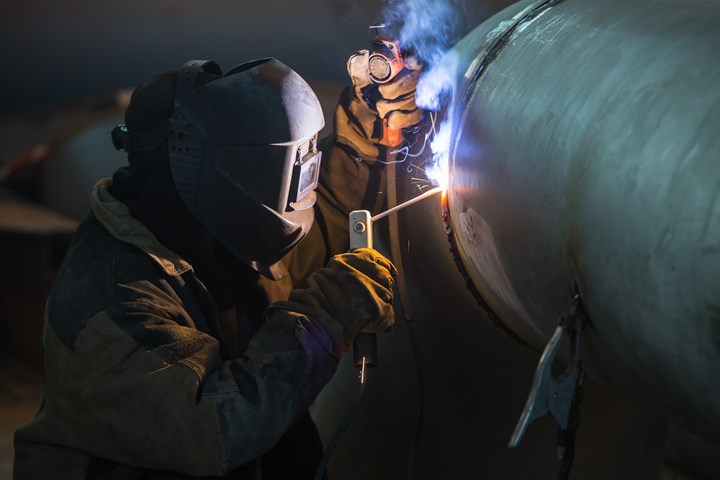Getting Welding Quality: Revealing the Keys of WPS Execution and Optimization
In the world of welding, accomplishing excellence is a pursuit that hinges on the precise execution and optimization of Welding Treatment Requirements (WPS) These fundamental documents act as the backbone of welding procedures, determining the procedures and specifications necessary for creating top notch welds constantly. Nonetheless, the secrets to unlocking the complete potential of WPS exist not just in understanding its value however likewise in understanding the complexities of its application and optimization. By diving right into the vital components, techniques, challenges, and ideal methods related to WPS, a globe of welding quality awaits those that agree to explore its depths.
Value of WPS in Welding
The Relevance of Welding Procedure Specifications (WPS) in the welding market can not be overemphasized, offering as the foundation for making certain uniformity, high quality, and safety and security in welding procedures. A WPS gives comprehensive guidelines on exactly how welding is to be accomplished, including necessary variables such as products, welding procedures, joint style, filler steels, preheat and interpass temperatures, welding currents, voltages, travel speeds, and much more. By adhering to a well-defined WPS, welders can maintain uniformity in their work, resulting in constant weld high quality across different projects.

Crucial Element of WPS
Reviewing the indispensable parts of a welding treatment requirements (WPS) is essential for understanding its role in welding operations. One crucial aspect of a WPS is the welding procedure specification, which outlines the details welding procedures to be used, such as gas tungsten arc welding (GTAW) or secured metal arc welding (SMAW) By including these vital components into the WPS, welding procedures can be standardized, making sure high quality, efficiency, and safety and security in welding procedures.
Methods for WPS Optimization

Secondly, training and qualification of welding personnel according to the particular demands of the WPS is vital. Giving comprehensive training programs and making certain that welders are certified to carry out treatments described in the WPS can lead to greater quality welds and lowered rework.
In addition, leveraging innovation such as welding software application and surveillance systems can assist in optimizing WPS. These tools can assist in tracking variables, guaranteeing specifications are within defined limitations, and giving real-time comments to welders, allowing them to make prompt changes for boosted weld top quality.
Typical Obstacles and Solutions
Encountering barriers in applying the approaches for WPS optimization can prevent welding procedures' performance and high quality. One common challenge is poor training or understanding of the welding treatment specs (WPS) amongst the welding group. This can result in improper execution of welds, causing issues and revamp. To resolve this, extensive training programs ought to be applied to guarantee that all welders are skillful in analyzing and using WPS accurately.
Another obstacle is the lack of proper documents and record-keeping, which is vital for WPS optimization. Without clear records of welding parameters, products used, and examination outcomes, it becomes tough to determine areas for enhancement and guarantee uniformity in welding processes. Implementing a durable see here documentation system, such as electronic welding administration software program, can assist streamline record-keeping and facilitate data evaluation for continual improvement.
Furthermore, irregular welding devices calibration and maintenance can posture a considerable challenge to WPS optimization. Routine tools checks, calibration, and maintenance routines ought to be stuck to strictly to ensure that welding criteria are precisely regulated and preserved within the defined tolerances (welding WPS). By resolving these usual challenges with positive options, welding procedures can improve effectiveness, quality, and general welding quality
Finest Practices for WPS Implementation
To make sure effective WPS execution in welding operations, adherence to market criteria and meticulous interest to information are extremely important. When initiating WPS application, it is vital to start by thoroughly comprehending the details welding requirements of the project. This involves a detailed testimonial of the welding treatment specs, materials to be bonded, and the environmental conditions in which find out this here the welding will certainly happen.
As soon as the requirements are clear, the next action is to choose the ideal welding treatment that aligns with these specifications. This involves consulting the appropriate codes and requirements, such as those supplied by the American Welding Culture (AWS) or the International Company for Standardization (ISO), to make certain conformity and top quality.
Furthermore, documenting the whole WPS implementation process is vital for traceability and quality assurance. In-depth documents must be maintained pertaining to welding specifications, product prep work, interpass see this page and preheat temperatures, welding consumables utilized, and any type of discrepancies from the original procedure. Normal audits and reviews of the WPS can aid recognize locations for enhancement and guarantee ongoing optimization of the welding procedure.


Final Thought
Finally, the implementation and optimization of Welding Procedure Specs (WPS) is essential for attaining welding excellence. By recognizing the crucial elements of WPS, executing reliable techniques for optimization, resolving typical obstacles, and following finest practices, welders can make sure high-quality welds and risk-free working problems. It is vital for specialists in the welding industry to prioritize the correct implementation of WPS to improve total welding performance and accomplish wanted end results.
The Importance of Welding Treatment Requirements (WPS) in the welding industry can not be overstated, offering as the foundation for ensuring consistency, high quality, and safety and security in welding operations. A WPS gives comprehensive directions on just how welding is to be carried out, including vital variables such as products, welding procedures, joint style, filler metals, preheat and interpass temperature levels, welding currents, voltages, traveling speeds, and much more. One important element of a WPS is the welding process spec, which details the details welding procedures to be made use of, such as gas tungsten arc welding (GTAW) or shielded metal arc welding (SMAW) By incorporating these essential aspects into the WPS, welding procedures can be standardized, making sure high quality, performance, and safety and security in welding procedures.
It is imperative for professionals in the welding industry to prioritize the proper implementation of WPS to enhance total welding efficiency and attain wanted end results.